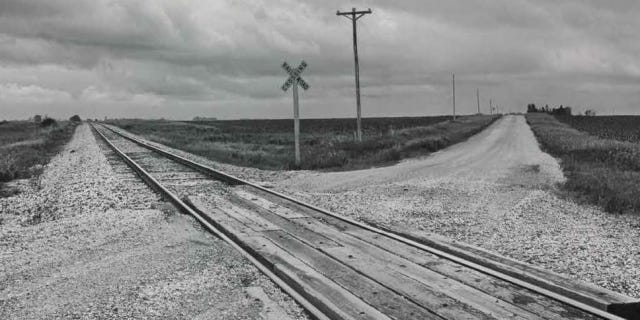
The American West: cowboys, Steinbeck, tumbleweeds, Hollywood. These are the stereotypes that come to mind — but the new exhibition at Beinecke Rare Book & Manuscript Library is set to prove us wrong. Eye on the West: Photography and the Contemporary West, on view through Sunday, December 16, 2018, captures portraits of the rich tradition and possibility in the vast land known as the American West. Curator George Miles, of the library’s Western Americana Collection, shies away from painting a comprehensive narrative of the entire Western region, instead peeking into moments of life and landscape through the diverse photographs of 20 artists. This Beinecke exhibit features 158 photographs, displayed throughout both the main floor and mezzanine of the library.
As much as it is an exhibit on photography, Eye on the West is also about the photography book as a medium. Miles frames stunning portrait and landscape displays on the library’s mezzanine with photobooks, rounding the perimeter of the exhibition space and placing the photographs in conversation with their method of distribution. The exhibit asks: how do we see the photograph which has become a part of a book? How do we create narratives of a region through photograph collections, and what happens when these collections exit these regions? How do we understand the West when we see photographs in our library, in our museums, on our coffee tables — without experiencing the expansive land itself, the colors and grit in their honest forms?
The perspective the exhibit offers is inevitably voyeuristic, observing a strange and foreign wild land. Yet, Eye on the West, in lacking a clear narrative, avoids a reduction of the rich region into stereotypes, showcasing a West which includes a Black fisherman in New Orleans, Native American teenagers playing basketball in the Dakotas, and vivid rainbow fjords in Alaska. Rather than painting the West with wide brushstrokes, the exhibit carefully dives into the work of its photographers to paint honest, detailed portraits.
Kim Stringfellow’s “Sage and Ted Quinn (Musician), Joshua Tree, California” (2014), displayed flat in a case on the main floor, shows a father and son sitting on their red living room couch, a set of drums behind them. The atmosphere is hushed as golden light peeks through the windows. Ted’s arm is wrapped around his son, and he looks directly into the camera, at the viewer, his blue eyes seemingly saying, “…this is my home, this is where I have found my family and my work, this is where I belong.” This same evocation of home is present in Lee Marmon’s “Eagle Dancers and Eagle dancers [from above],” which is hung along the stacks on the ground floor. In these portraits, taken in Laguna, New Mexico, young men in elaborate feathered costumes stand with concentrated faces, ready to break into dance at any moment. In the next photo, they run, flying across the desert, in silent conversation with the land. And in Miguel Gandert’s “Voces de la Tierra: Planting Winter Wheat San Luis, Colorado,” (1997) people work with the vast land at their disposal. Between tall wheat plants and clouds of dust are two farmers, one driving a tractor which pulls the other man, sitting upon a reaper. Here we can see the intimate relationship between the land’s natural resources and its people. Gandert’s subjects are framed within strands of wheat, as in real life they are framed within the tradition of cultivation. This is the tradition creates and informs the cultures of the region and thus makes the West a home.
More than anything, the exhibit evokes the tensions between past and present, nature and man, destruction and recreation. It showcases grand landscapes and honest portraits, highlighting the land’s simultaneous senses of loneliness and freedom. It paints the West as a place in which we may both create ourselves and lose ourselves. The often-emotional portraits present not only the mythic land of the Hollywood Western film, not just the land of the Gold Rush and the Trail of Tears and cowboys, not merely the myth of our past, but a contemporary land, a land where real people live and work. The photographs in Eye on the West speak to a tradition of tension and borders, of the physical work of traveling and developing open spaces, the work of creating followed by the work of surviving. What these images rely on is imagination of the rich world surrounding them, and Eye on the West grants us this ability to imagine the beauty and work of the region we call the West as it extends beyond the Beinecke’s walls, in both our imaginations and in breathtaking physical reality.
Between Strands of Wheat was originally published in The Yale Herald on Medium, where people are continuing the conversation by highlighting and responding to this story.
